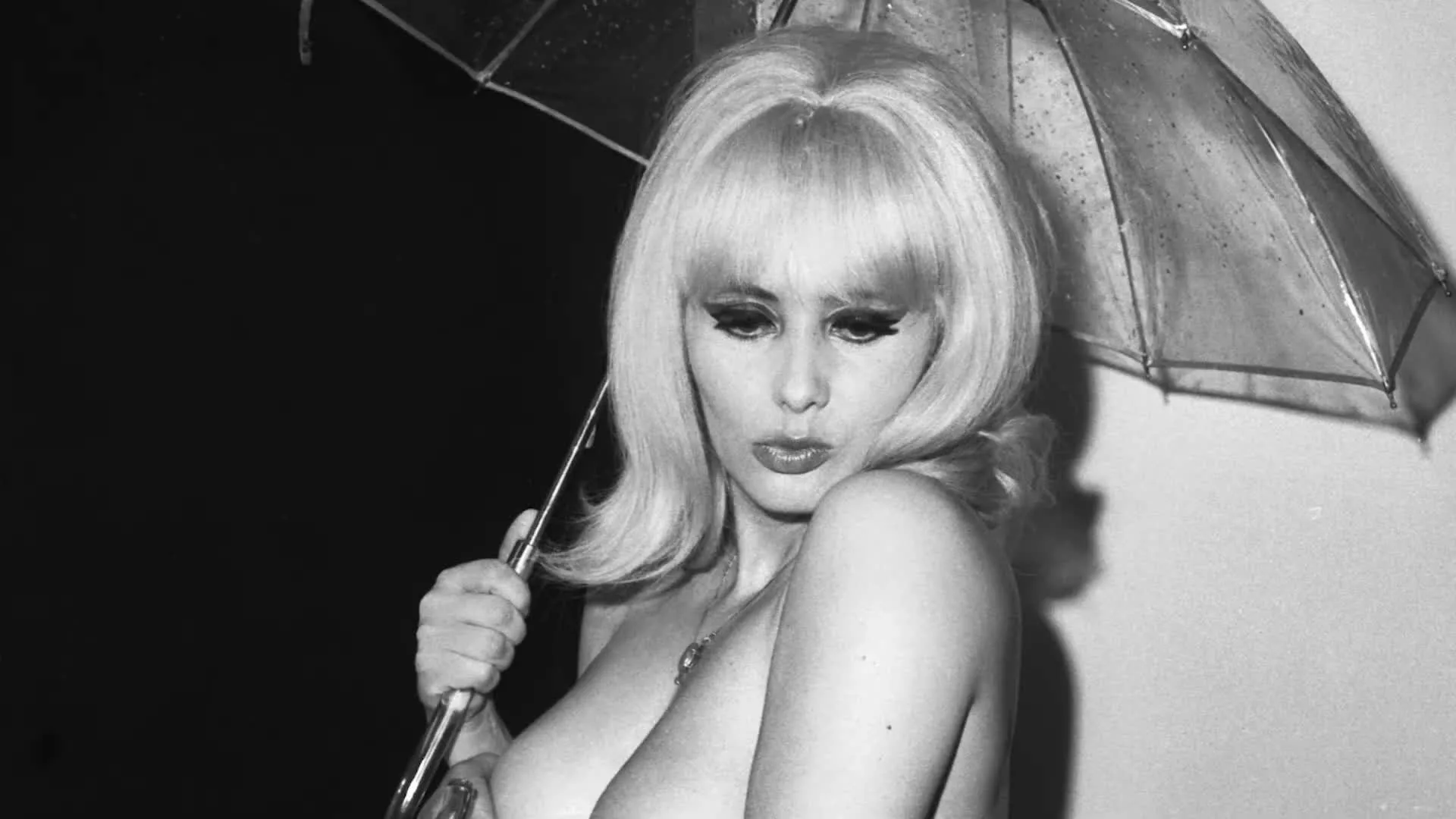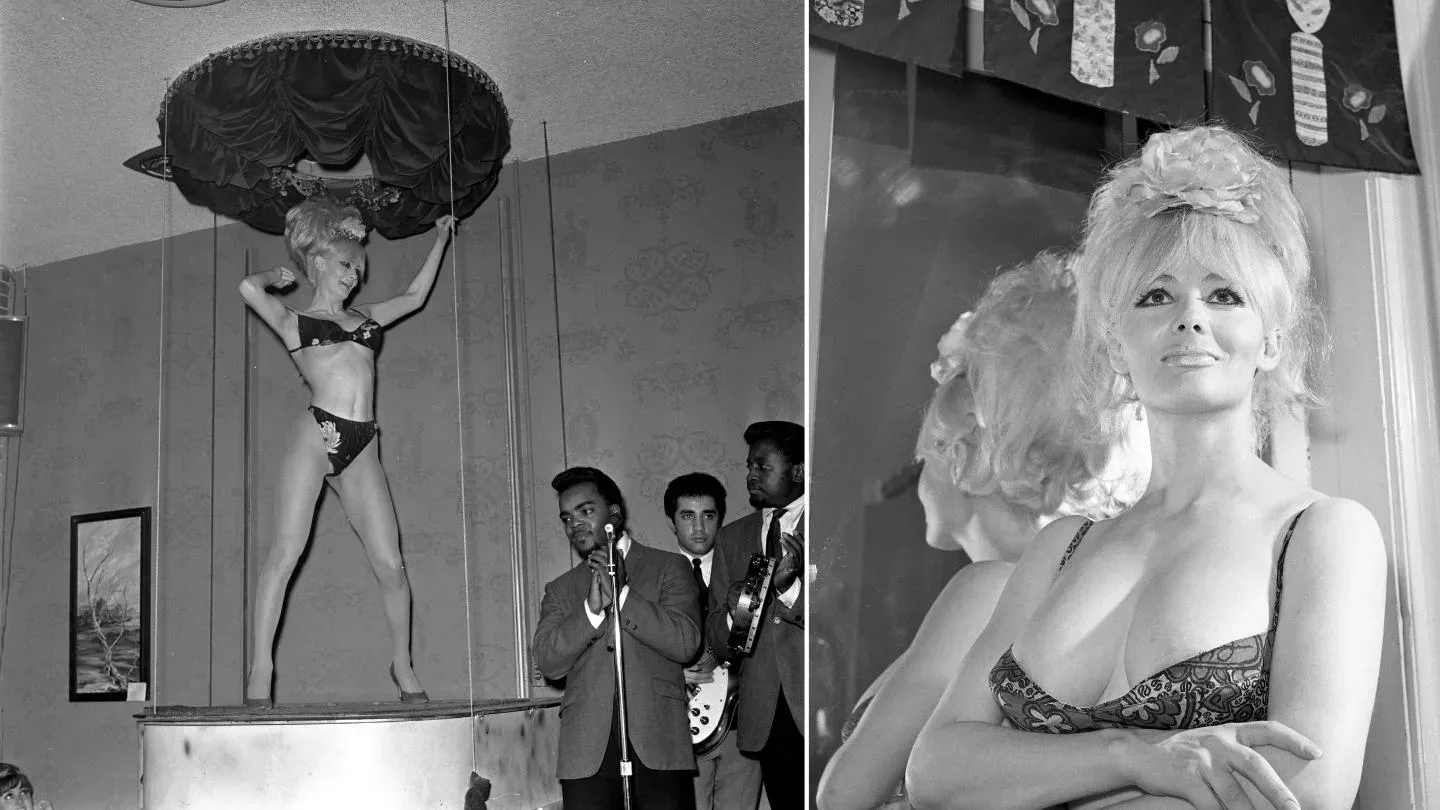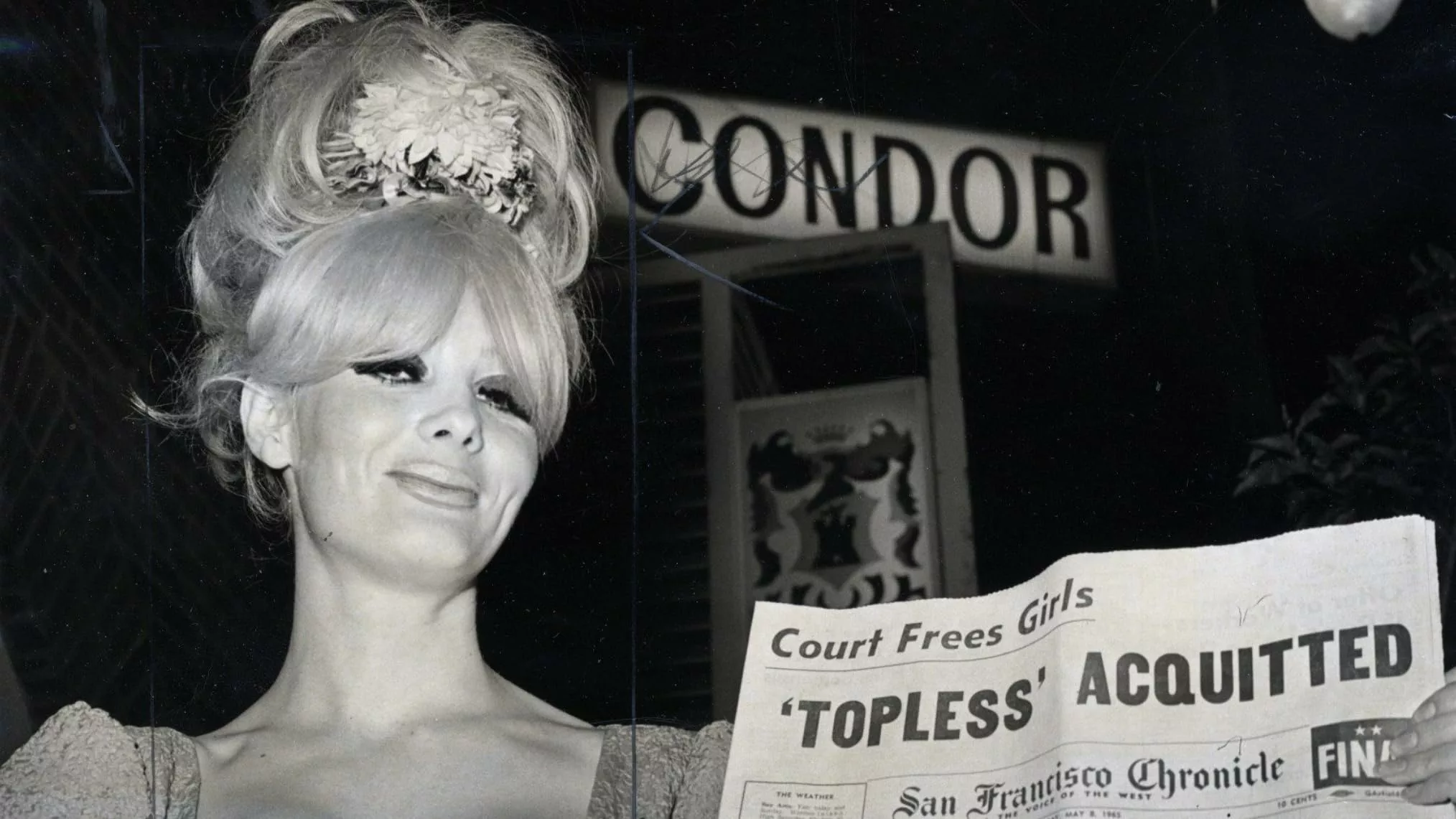It’s 1964 in San Francisco. The city is hosting the Republican National Convention as the sexual revolution is stirring coast to coast. Across town from the political hubbub, lounge singer Carol Doda is about to make history at the Condor Club. Emboldened by a new “monokini” swimsuit leaving little to the imagination, Doda launches her topless dance routine. The decision rockets her to international fame as America’s first topless performer.
Overnight, Doda transforms from a cocktail waitress to a counterculture icon. Soon, lookalike acts emerge while protests flare. As topless clubs spread, so too did legal battles over public decency. Through it all, one thing is clear: Nothing will ever be the same. Doda sparks an urgent debate about embracing her choices or accusing exploitation in a male-dominated industry.
The new documentary “Carol Doda Topless at the Condor” delves into this watershed moment. Weaving archival footage with eyewitness interviews, the film explores Doda’s significance and the movement’s uncertainties. Directors aim to present multiple viewpoints rather than judgments. Most of all, they shine a light on the trailblazing woman behind the headlines, whose daring act sparked a revolution whose reverberations are still felt today.
Carol Doda’s Revolutionary Career
The documentary Carol Doda Topless at the Condor tells the compelling story of America’s first topless dancer and her impact on San Francisco’s nightlife scene in the 1960s. Directors Marlo McKenzie and Jonathan Parker expertly weave together archival footage, photographs, and new interviews to shine a light on Carol Doda’s pioneering spirit and the cultural forces that converged at a pivotal moment in history.
Through interviews with those who knew Doda personally and professionally, we learn of her humble beginnings as a cocktail waitress at the famous Condor Club. Ever the determined entertainer, she began dancing atop the piano during live performances. It was there that a daring decision was made—inspired by the new “monokini” swimsuit fashion—for Doda to bare her breasts while performing. The shockwaves were instantaneous. Crowds flocked to see the beauty with courage, unlike anything witnessed before.
Of course, controversy soon followed. Doda’s act brought national attention to topless dancing and California’s shifting views on morality. Multiple arrests ensued as she pushed the boundaries further. But Doda was undeterred in her mission to push social limits and satisfy audiences, no matter the personal cost. Though iconic, her career path was not without struggles. Financial disputes with club owners and the toll of aging in the industry created hardships.
Debates surrounding Doda’s legacy remain complex. While undeniably pioneering, questions emerge around gender and power dynamics within the sex industry. Both her supporters and critics make compelling cases regarding empowerment and exploitation. In the end, Doda’s story reveals the messy realities and tradeoffs faced by all revolutionary figures. Though her personal life was a closely guarded secret, Carol Doda indelibly shaped her city and era and continues to inspire discussion on art, feminism, and societal change.
The Unexplored Pioneer
While Carol Doda Topless at the Condor shares a pivotal story in the sexual revolution, portions felt incomplete. Viewers learn much about Doda’s impact but less about the woman herself. Tantalizing details raises questions left hanging.
We hear of hardships in Doda’s youth, yet not how they shaped her. References to abusive family members and a lost custody battle lack context. Missing are the inspirations and influences that drove Doda’s career quest. Without exploring her motivations and experiences fully, it’s difficult to relate to her journey on a deeper human level.
Some interviews divert attention rather than illuminate the subject. Discussions of old dance routines or Jimi Mamou’s music career, while fun local color, dilute Doda’s narrative arc. Her fleeting romance with Sinatra exemplifies a missed opportunity for deeper insight.
Gaps in the post-Condor era are glaring. Doda battled financial troubles and health problems, yet specifics are scarce. Crucial relationships go unexamined, like her partnership with companion Jay North. More could have been uncovered through additional reporting.
Viewers would have benefited from tighter editing as well. Narrative flow falters when bouncing between subjects. Trimming distracting tangents would maintain focus on Doda and strengthen the documentary’s core message.
Carol Doda Topless at the Condor brings an important story to light. But by more fully exploring its pioneering subject’s full humanity and leaving fewer stones unturned, it could have revealed even greater insights into an American cultural icon.
Carol Doda’s Legacy
While Carol Doda remained a mostly private person throughout her life, the indelible mark she left on culture is undeniable. As the first topless dancer in America, Doda shattered taboos and helped spark the sexual revolution that continued developing in subsequent decades. Her impact extended far beyond the walls of the Condor Club, shaping the adult entertainment industry and views of women’s liberation nationwide.
Marlo McKenzie and Jonathan Parker’s documentary breathes life into Doda’s story, filling in details of her rise to fame and cultural significance through archival footage and interviews. For those unfamiliar with Doda, the film brings her story to new audiences and establishes her secure place in history. Although certain parts of her life remained elusive, the film effectively transports viewers back to 1960s North Beach. We gain insight into the vibrant nightclub scene Doda helped create and the social changes unfolding during that transformative period.
While viewpoints expressed in the documentary understandably look back with rose-colored lenses, it doesn’t shy away from complexities. The film leaves room for ongoing discussion around agency, empowerment, and challenging preconceived notions. Did Doda boldly seize her sexuality, as some claim, or was she ultimately constrained by the society and industry around her? As with many figures who played roles in major historical movements, interpretations of Doda will likely continue evolving with the times.
Overall, McKenzie and Parker deliver an entertaining historical time capsule that preserves Doda’s memory and legacy for new generations to discover. The film serves as an accessible introduction for those wanting to learn more about this cultural pioneer, even if it can only partially illuminate the full person behind the renown. Doda’s story and its implications remain compelling discussion points many decades later.
Carol Doda’s Legacy
While best known as the first topless dancer in America, Carol Doda’s impact extended far beyond the stage at the Condor Club. Her 1964 debut launched an era of social change and helped empower women nationwide.
Doda shattered taboos with her runway-to-rafters entrance above the diners and dancers below. Women’s bodies were undergoing reevaluation, and here was Doda redefining what was possible. Imitators followed, hoping to reignite the sensation, yet none matched Doda’s unique star power. She was a headlining force for over two decades, influencing countless young women who found their own voices through her example.
Doda’s critics dismissed her as exploitation’s pawn instead of its player. But she showed she could harness male attention to her advantage, parlaying a piano act into worldwide fame. Far from a passive object, Doda openly debated women’s rights through humor and wit. She knew stripping was sometimes the only card a struggling woman held, and she played it unapologetically to uplift herself and others.
While boundaries eventually hemmed in Doda’s act, none could contain her bold spirit. She tirelessly reinvented in new avenues like acting, singing, and talking lines, keeping performance her purpose wherever it led. Doda also battled secret personal pains, standing tall despite life’s disadvantages. Hers was a lifelong fight against limitations, an example for any woman daring to challenge expectations.
Though health issues dimmed her later years, Doda’s light never faded. She glittered to the end, proving the weakness of the flesh does not weaken the heart. Her legacy remains that first daring flash, igniting a revolution by being true to her star’s call despite the world’s disapproval. Doda blazed a trail for all who followed, demanding respect on her own terms.
The Review
Carol Doda Topless at the Condor
While the documentary touches on Doda's significance, it only lightly grazes the surface of her rich personal story. By relying too heavily on secondary sources and focusing more on contextual history than intimate details, the film misses a chance to truly illuminate its trailblazing subject. However, in sparking discussion on feminism, exploitation, and social change, "Carol Doda Topless at the Condor" succeeds in its goal of ensuring this cultural icon is not forgotten.
PROS
- Provides historical context for the era and places Doda's story within the sexual revolution movement.
- Features insightful interviews that offer first-hand perspectives on Doda and the Condor Club scene.
- Sparks a complex debate on feminism and women's empowerment through exotic dancing.
CONS
- Lacks intimate personal details about Doda's backstory and private life
- Does not thoroughly explore the psychological and physical hardships Doda potentially faced.
- Could have delved deeper into issues of race and discrimination at the clubs.



















































